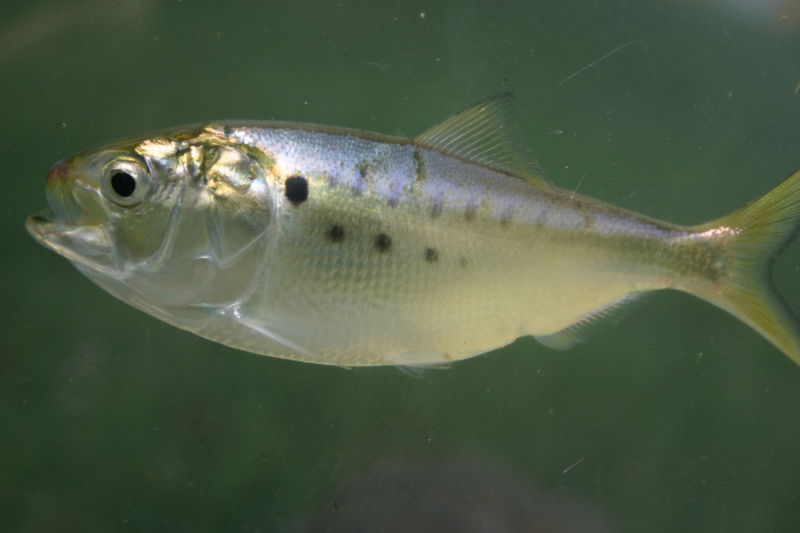WASHINGTON, DC / ACCESS Newswire / October 27, 2025 / At a Chesapeake Bay Foundation (CBF) event titled "The Impacts of Climate on Fisheries," held on September 24, 2025, at the Virginia Aquarium & Marine Science Center in Virginia Beach, Chris Moore, CBF's Senior Regional Ecosystem Scientist, made several inaccurate statements about the Atlantic menhaden fishery and its management.
The Menhaden Fisheries Coalition (MFC) issues the following response to clarify the facts and ensure the public record reflects the best available science.
CLAIM: The menhaden industry has blocked Bay-specific science.
FACT:
The menhaden industry has a long record of collaborating with scientists and agencies throughout the Atlantic coast, contributing to more than a dozen cooperative studies with universities and NOAA. When new acoustic survey methods were proposed for Bay research, industry representatives supported conducting a pilot study to validate the technology before applying it across the entire Chesapeake. The disagreement was about scientific rigor, not opposition to research.
Today, a Bay-specific research roadmap funded through the Science Center for Marine Fisheries and led by scientists at the University of Maryland Center for Environmental Science, VIMS, and NOAA is underway to design a scientifically defensible Chesapeake Bay menhaden harvest cap, the very type of work Mr. Moore claimed was being prevented.
CLAIM: The ASMFC Technical Committee called for a 50% reduction in harvest to maintain healthy populations.
FACT:
No scientific body has issued such a recommendation. The Atlantic States Marine Fisheries Commission's most recent peer-reviewed assessment concluded that Atlantic menhaden are not overfished and not experiencing overfishing. The current harvest limit is set conservatively using ecological reference points that ensure sufficient menhaden remain in the water to feed predators such as striped bass and ospreys. Demands for a 50% reduction stem from advocacy campaigns, not from Commission scientists.
CLAIM: The latest assessment shows the population dropped by roughly 37%.
FACT:
Updates to assessment models are routine as part of the scientific process, but the most recent analyses confirm that menhaden remain abundant and well within sustainable harvest levels. The fishery operates far below the ecological threshold set by the ASMFC and remains certified as sustainable by the Marine Stewardship Council, one of the world's most respected independent standards for fisheries management.
CLAIM: Menhaden are under stress in the Chesapeake Bay due to climate change.
FACT:
Maryland's Department of Natural Resources' annual young-of-year surveys show that for three consecutive years, juvenile menhaden have been abundant and widespread throughout the Bay, including the highest levels recorded since 1990. These findings indicate that menhaden continue to be at healthy levels in the Bay despite changing environmental conditions.
CLAIM: There are not enough menhaden to support wildlife such as striped bass and osprey.
FACT:
The Ecological Reference Points used to manage Atlantic menhaden were developed by the Atlantic States Marine Fisheries Commission between 2017 and 2020 through a collaborative process that included federal and state scientists, university researchers, and environmental organizations, among them, the Chesapeake Bay Foundation. These ERPs replaced single-species management with an ecosystem-based model that explicitly accounts for the needs of key predators that depend on menhaden for food. The multispecies model incorporated striped bass as the principal indicator species, along with bluefish, weakfish, and spiny dogfish to represent the broader predator community.
Research by the U.S. Geological Survey, the Virginia Institute of Marine Science, and others demonstrates that osprey breeding success is influenced by multiple factors, including weather patterns, predation by recovering bald eagle populations, and the availability of other prey species.
Importantly, the regulated menhaden fishery begins after osprey nesting and feeding periods are already underway, meaning fishing activity does not coincide with the critical chick-rearing season.
CLAIM: Virginia's reduction fishery takes 70% of the coastwide catch, nearly half of it from inside the Bay.
FACT:
Harvest within the Chesapeake Bay is strictly limited by a 51,000-metric-ton Bay cap, about one-third of historical levels. Actual landings routinely fall below this limit, and most of Virginia's catch is taken from coastal waters outside the Bay. These restrictions, combined with daily reporting and vessel tracking, reflect the fishery's precautionary management approach.

CLAIM: Menhaden fishing harms tourism and whale watching.
FACT:
There is no credible scientific evidence linking regulated menhaden harvests to whale or tourism impacts. Predators feed on a variety of prey species, and menhaden management already incorporates the needs of those predators through ecosystem-based reference points. Menhaden remains the only U.S. fishery managed explicitly for predator needs within a scientifically validated ecological framework.
Setting the Record Straight
The Atlantic menhaden fishery is one of the best-studied and most responsibly managed fisheries in the world. It operates under ecosystem-based quotas developed collaboratively by federal and state agencies, conservation organizations, and industry representatives. These quotas are designed to balance the health of predator populations, the broader ecosystem, and the livelihoods of the communities that depend on the fishery.
The fishery employs unionized Virginia watermen earning strong wages and benefits in one of the region's few remaining working-waterfront industries. Its sustainability has been independently confirmed by both the Atlantic States Marine Fisheries Commission and the Marine Stewardship Council.
Mr. Moore's inaccurate statements on the menhaden fishery begin at the 45:30-mark in the YouTube video.

About the Menhaden Fisheries Coalition
The Menhaden Fisheries Coalition (MFC) is a collective of menhaden fishermen, related businesses, and supporting industries. Comprised of businesses along the Atlantic and Gulf coasts, the Menhaden Fisheries Coalition conducts media and public outreach on behalf of the menhaden industry to ensure that members of the public, media, and government are informed of important issues, events, and facts about the fishery.
Press Contact
Menhaden Fisheries Coalition
(202) 595-1212
www.menhaden.org
SOURCE: Menhaden Fisheries Coalition
View the original press release on ACCESS Newswire






